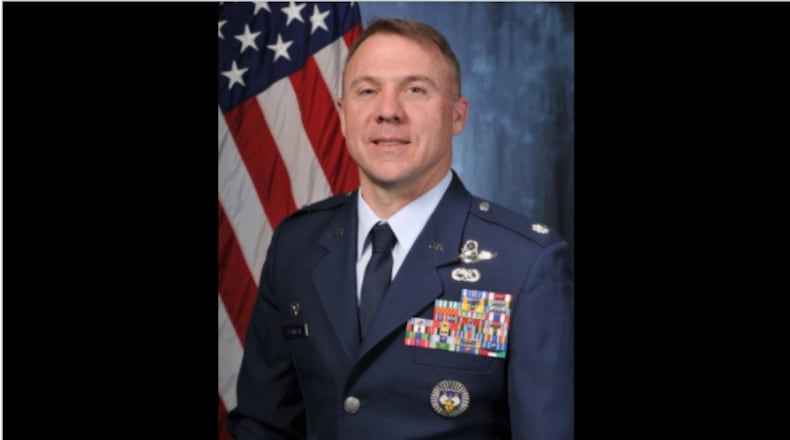It was April 6, 2003, just days after U.S. troops went into Baghdad during the Iraq war.
Nearby, fellow A-10 Thunderbolt II pilot Lt. Col. Raymond “Donk” Strasburger was flying in a second jet and would soon join Thornton in a fierce battle with Iraqi Republican Guard troops firing tank rounds at U.S. soldiers on the other side of the Tigris River.
RELATED: Wright-Patterson marks century anniversary in 2017
Thornton, 47, will receive a Silver Star — the third highest medal for valor in the military – in a private ceremony today at the National Museum of the U.S. Air Force for his effort to help thwart the assault against U.S. troops.
Air Combat Command commander Gen. James “Mike” Holmes was expected to present the medal.
Thornton said the medal, upgraded from a Distinguished Flying Cross he originally received for the combat mission, was “humbling.” Air Force squadron mates had originally asked that Thornton receive the Silver Star. The Air Force agreed to the upgrade after a review of the mission years later.
“I was actually driving to work when the general called to let me know, and I was shocked, surprised, thrilled, all kinds of emotions,” said Thornton, a Southwest Airlines pilot who lives in Monument, Colo.
Strasburger, 56, a retired colonel, flew to Dayton with his wife, Teresa, from their home in Germany for the event. Thornton and Strasburger were assigned to the 75th Fighter Squadron at Pope Air Force Base, N.C., during the Iraq war.
In an email sent en route to Dayton, Strasburger, previously given the Silver Star for the combat mission, lauded Thornton’s “unequivocal and heart-felt dedication to preserve the lives” of their fellow A-10 pilot and Army soldiers “under a hailstorm of heavy enemy fire on the ground, and to simultaneously destroy the enemy at the expense of his own life if that’s what it took.”
According to an Air Force narrative, Thornton and Strasburger made multiple passes under enemy fire, firing the Thunderbolt II’s 30-millimeter gun and launching rockets and missiles “through very heavy anti-aircraft fire and blinding sandstorms to decimate an enemy Republican Guard force.”
RELATED: Seven fighters and bombers that are managed at Wright-Patt
In the midst of the 33-minute attack, the two aircraft destroyed three T-72 tanks, six armored personnel carriers “and several other enemy vehicles,” the Air Force said.
The memories are still vivid for Thornton, a retired lieutenant colonel.
“The adrenalin was just amazing when we got done flying,” he said. “…My first shot was on the lead tank, and I got a secondary explosion, and I still remember that vividly.”
On his fourth pass, something — he believes it may have been a missile — nearly struck his A-10.
“I maneuvered the airplane hard and I remember hearing Donk’s voice on the radio going, ‘Are you OK?’”
Thornton was. The pilot went back on the offensive in a sandstorm that cut visibility to about a mile, or three times less pilots are normally allowed to train in, he said.
The two pilots used night flying-like tactics to avoid hitting each other, Thornton said.
“You do so many different scenarios through training, and you just get comfortable in the airplane and it becomes a part of you,” he said. “The training kicked in. I didn’t feel scared at all.”
About the Author
